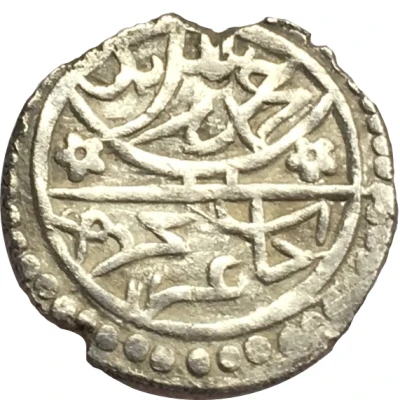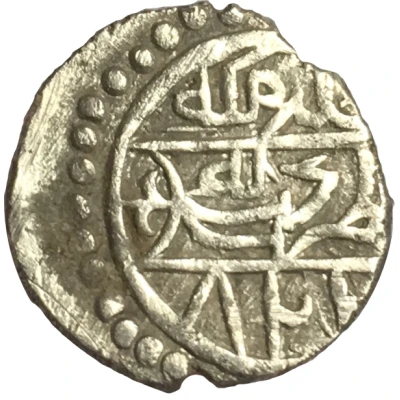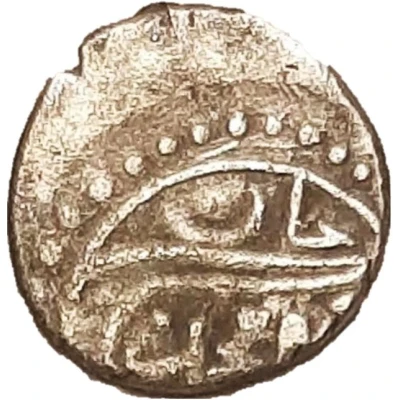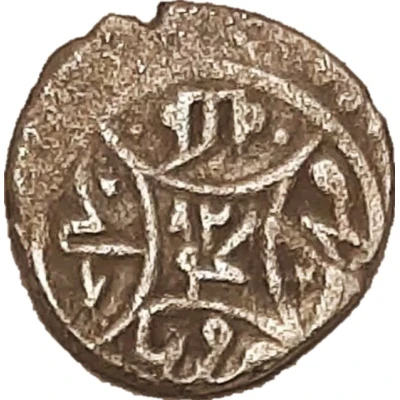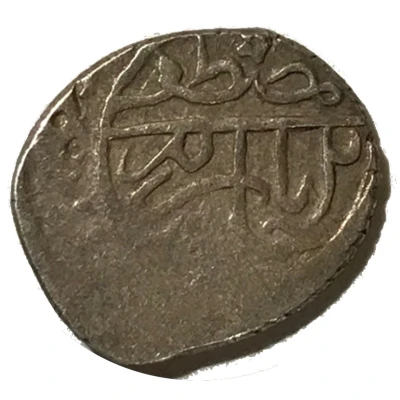
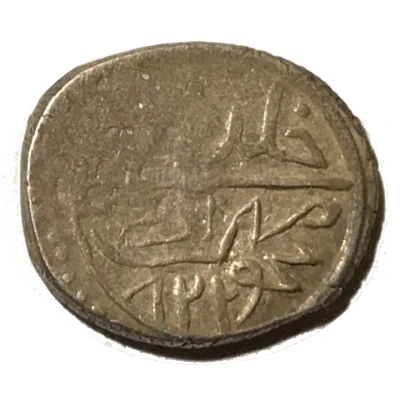

Akçe - Mustafa Çelebi Pretender to the Throne; Sultan of Rumelia
824 (1421) year| Silver | 1.22 g | 13 mm |
| Issuer | Ottoman Empire |
|---|---|
| Sultan | Murad II (1421-1444, 1446-1451) |
| Type | Standard circulation coin |
| Year | 824 (1421) |
| Calendar | Islamic (Hijri) |
| Value | 1 Akce |
| Currency | Akçe (1327-1687) |
| Composition | Silver |
| Weight | 1.22 g |
| Diameter | 13 mm |
| Shape | Round (irregular) |
| Orientation | Variable alignment ↺ |
| Demonetized | Yes |
| Updated | 2024-10-06 |
| Numista | N#283794 |
|---|---|
| Rarity index | 95% |
Reverse
Script: Arabic
Lettering:
خلد ملكه
ضرب ادرنه
٨٢٢٤
Translation: [May God] perpetuate his reign. Struck [in] Edirne, 8224 [sic]
Comment
On the death of the Ottoman sultan Mehmed I in 1421, his younger brother Mustafa returned from exile to usurp the throne from Mehmed's son and heir, Murad II. Mustafa was initially successful, supported by the Byzantine Emperor Manuel II who hoped a renewed civil war would weaken the Ottomans. Mustafa declared himself Sultan of Rumelia (the European portion of the Ottoman realms) and took over the Ottoman capital of Edirne. However, the political tide turned against Mustafa. He attempted to invade Anatolia, but his forces began to desert him as he lost powerful supporters. Mustafa was pursued by Murad's forces, captured, and executed by hanging, a punishment usually reserved for common criminals. He was branded 'düzmece', 'the imposter by the Ottoman court.During Mustafa's brief reign, some akee coins were minted in his name in his capital of Edirne. Among these are coins with the rather unusual date '8224', as the die engraver included an extra '2' in the Islamic year 824 (1421) by mistake.
Interesting fact
One interesting fact about this coin is that it was issued during a time of political turmoil in the Ottoman Empire. Mustafa Çelebi, also known as Düzmece Mustafa, was a pretender to the throne who claimed to be the son of Sultan Bayezid I and attempted to overthrow the reigning sultan, Mehmed I. Despite his efforts, Mustafa Çelebi was ultimately unsuccessful and was executed in 1421. The coin bearing his name and image was likely issued to support his claim to the throne, but its production was likely limited due to the short duration of his reign. This coin is now a rare and valuable collector's item, providing a unique glimpse into the political intrigue of the Ottoman Empire during this time period.
